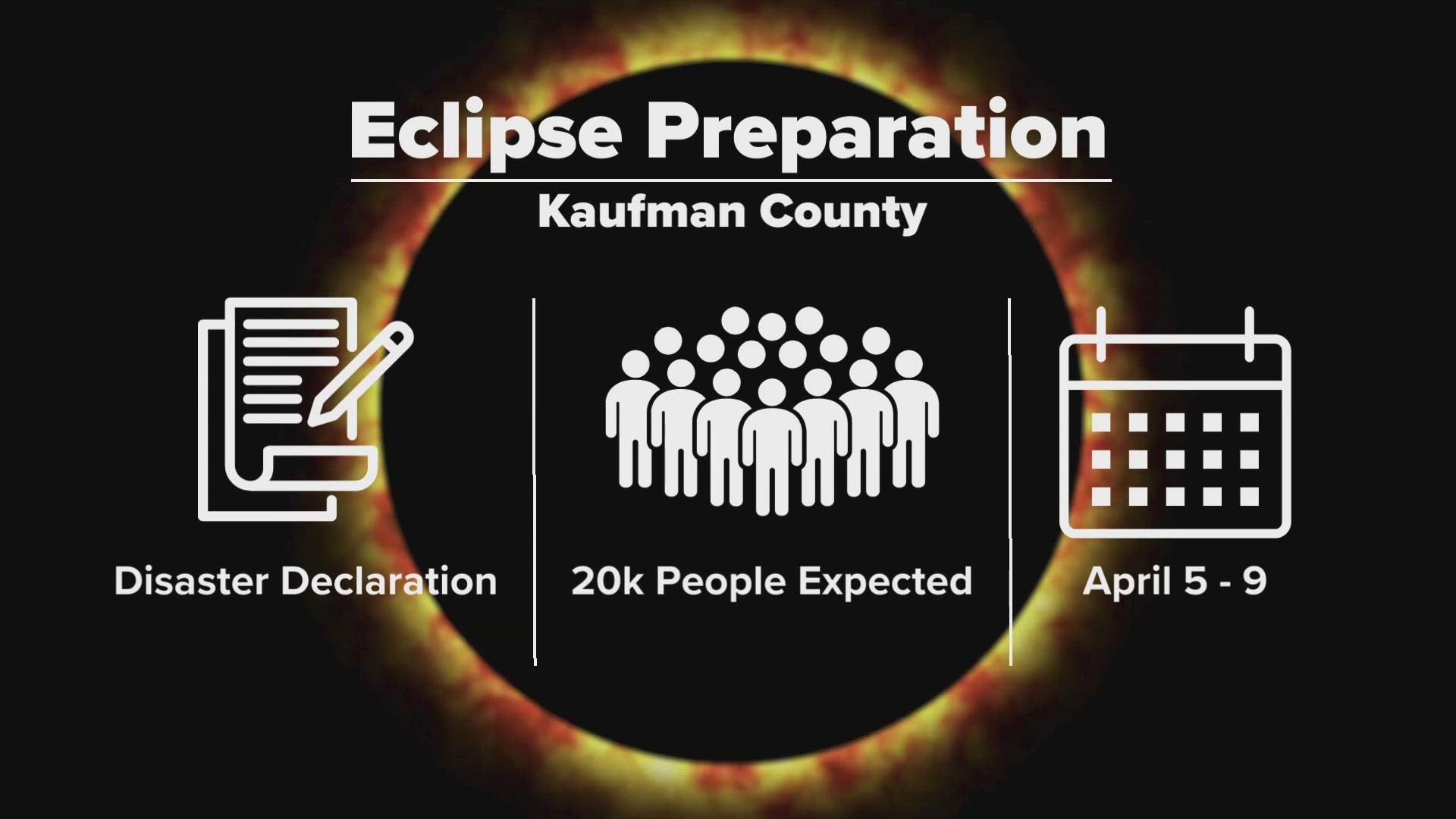DALLAS — A Total Solar Eclipse happens during the early afternoon of Monday, April 8.
All of Texas sees at least a partial eclipse, weather permitting, but some North Texas locations will be in the path of totality! The Dallas-Fort Worth area will be the largest metropolitan area in the path of totality. Make sure you are prepped to properly view this celestial event!
First let’s talk about staring directly into the sun.
Don’t do it. It is not safe to do this during any time of the year. Our natural human instincts tell us not to stare directly at the sun. This can cause serious and permanent damage to the eyes due to the intense brightness and harmful ultraviolet (UV) radiation emitted by the sun.
What about sunsets and sunrises?
That is a bit different. The sun’s rays are at a reduced intensity during sunrise and sunset. The Sun is positioned closer to the horizon, resulting in a longer path of atmosphere that sunlight must travel to reach the observer's eyes. This atmospheric filtering scatters and absorbs much of the Sun's intense brightness and harmful UV radiation, reducing the overall intensity of light.
Best way – Eclipse Glasses
Eclipse glasses are specialized eyewear designed to protect the eyes from the harmful effects of watching solar eclipses. These glasses are equipped with solar filters that block out most of the Sun's intense light, as well as harmful ultraviolet (UV) and infrared (IR) radiation.
Eclipse glasses should be certified to meet the ISO 12312-2 standard, indicating that they offer sufficient protection against solar radiation. Glasses that meet this standard will have the ISO 12312 -2 code on them.
Ditch the regular sunglasses or homemade filters as these are not safe for viewing solar eclipses.
Glasses must be worn at all times during the eclipse except for totality. In some spots, this could be between four and four and a half minutes!
Indirect viewing of the solar eclipse
If you don’t have proper certified eclipse glasses, there are indirect methods you can use to safely observe a solar eclipse without directly looking at the Sun. It does require some creativity!
- Pinhole Projection: Create a pinhole projector by poking a small hole in a piece of cardboard or paper. With your back to the Sun, hold the cardboard or paper up and allow sunlight to pass through the pinhole onto a surface, such as another piece of paper or the ground. You will see an inverted image of the Sun projected onto the surface. This only works while the eclipse is approaching or exiting totality.
- Use Your Hands: You can also use your hands to create a simple projection method. Interlock your fingers creating small gaps between them. With your back to the Sun, look at the shadow your hands cast on the ground or a nearby surface. The gaps between your fingers will project images of the Sun, and during a partial eclipse, these images will appear crescent-shaped. This will not work during totality.
- Tree Leaves or Foliage: The gaps between leaves on trees can act as natural pinhole projectors. Look at the sunlight beneath a tree during the eclipse to see the different shape images the sun creates!
More Texas solar eclipse:

